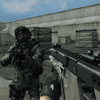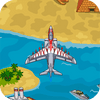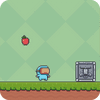5 lessons from the history of making Star Wars video games
Tha
As a result of clever wordplay, May 4th is today considered a “holiday” dedicated to the galaxy far, far away. Originating in George Lucas’s notebooks, the Star Wars saga has grown into a massive multimedia property that has influenced video game creators both inside and outside the series.
Teams that have worked on the franchise throughout the years have been gracious enough to talk about the lessons they learned about game development while exploring a galaxy far, far away. Studios like Respawn Entertainment and BioWare have had the opportunity to create their own unique regions of space, while others like DICE and EA Motive have done an incredible job of capturing the intensity of the series’ high-stakes battles.
On this Fourth of May, we’ve compiled five such insights from the field of video games for your consideration. The ideal scenario would see this list expand as additional production companies were given the chance to bring the Star Wars world to life.
nks to the power of puns, May 4th is now a “vacation” committed to the world of Star Wars. Birthed in the note pads of George Lucas, it’s now a significant multimedia franchise that’s inspired video game designers working within and outside of the franchise.
Over the last years, numerous groups who’ve dealt with the series have actually been kind enough to share a few of the video game advancement lessons they acquired when checking out the galaxy far far. Some studios like Respawn Entertainment and BioWare have actually gotten to develop their own corners of deep space, while others like DICE and EA Motive have actually done an amazing task recording the energy of the series high-stakes fights.
To commemorate this year’s May the Fourth, we’re collecting 5 of those knowings from the world of video game advancement for your perusal. Ideally it’s a list that grows longer and longer as more studios are offered the possibility to bring the Star Wars universe to life.
Jedi Knight II: Jedi Outcast was develop
Thanks to Aspyr Media’s conversion of Star Wars Jedi Knight II: Jedi Outcast, we were able to make contact with Raven Software, the developer of some of the most beloved Star Wars games from the Gamecube era.
At any point in the future when you look back at that game and wonder, “how did they do that?” It’s important to reflect on how much progress has been made in the art of game design. Chris Foster, the team’s lead designer, recalled that back then, he had told us that everyone in the Jedi Outcast crew “used a great deal of hats.”
“I developed levels, I supervised of the style group but I also had to light levels, I was scripting, and we were doing all the connection of whatever and we were helping Eric ensure that when the discussion went it, that all of it made good sense offer what we needed to alter around,” he recalled.
ed by “generalists”
Aspyr Media’s port of Star Wars Jedi Knight II: Jedi Outcast provided us an excellent opportunity to connect to Raven Software, which still uses numerous designers who dealt with among the most cherished Star Wars video games from the Gamecube period.
If you’re ever recalling at that video game and questioning “how did they do that?” It’s worth focusing on simply just how much has actually altered in the craft of video game advancement. Lead designer Chris Foster informed us at the time that everybody on the Jedi Outcast group “used a great deal of hats.”
“I developed levels, I supervised of the style group however I likewise needed to light levels, I was scripting, and we were doing all the connection of whatever and we were assisting Eric ensure that when the discussion went it, that all of it made good sense offer what we needed to alter around,” he remembered.

“These days, we tend to be a little bit more compartmentalised. We build the levels and all, but we have a separate team for things like Hollywood-caliber lighting and a scripter with, like, 20 years of expertise, so we divide and conquer. More communication is clearly required.
There’s no denying that in 2023, making a hit video game requires a large team of creators. It’s a testament to how much can be accomplished with a small team of talented people and the right resources.
To offer Force powers, you require adaptive rag dolls
Players in Star Wars Jedi: Fallen Order take on the role of Cal Kestis, a padawan who has spent years in seclusion and is now relearning how to use the Force. The animators behind Fallen Order wanted players to experience the full fury of the Force in combat, so they had to make enemy animations that react strongly to being hurled around like ragdolls.
Senior software application developer Bartlomiej Waszak explained how the studio adapted the game’s ragdoll technology to allow enemy bodies to tumble around in places large and small at a session at GDC Summer 2020 (held somewhere due to, you know, the COVID-19 epidemic).
While the ragdoll opponents generated by the early technology performed admirably in wide areas, they struggled in narrow corridors. Stormtroopers and other enemies’ limbs would clip through the walls, ruining the immersive Star Wars experience.
According to Waszak, “the service was to keep the hip body as a physically simulated body and to create a new restriction for that body.” Between the hip body and the provided animation target lies that limitation. This new constraint eliminates any wiggle room by forcing the physics body of the hip bone to track the animation goal.
With this new possibility, the question was, “What happens when we hit a wall?” When the hip body runs into a wall, what happens to the animation target? What should we do about that body that’s plateauing?
We monitor the deviation from the desired animation objective based on the actual location of the hip body. We simply switch to free-fall rag doll mode if the hip body’s continuous drive is unable to hit the goal within some limit.
It’s fascinating to see the level of detail that goes into making a video game, right down to the realities of getting a body to flail around in the appropriate way.
It’s remarkable to see how much work goes into producing a computer game, even down to the practical considerations of making a character’s body behave realistically.
While the ragdoll opponents generated by the early technology performed admirably in wide areas, they struggled in narrow corridors. Stormtroopers and other enemies’ limbs would clip through the walls, ruining the immersive Star Wars experience.
According to Waszak, “the service was to keep the hip body as a physically simulated body and to create a new restriction for that body.” Between the hip body and the provided animation target lies that limitation. This new constraint eliminates any wiggle room by forcing the physics body of the hip bone to track the animation goal.
What happens when we encounter a roadblock while using this novel approach was the main issue. When the hip body runs into a wall, what happens to the animation target? What should we do about that body that’s plateauing?
We monitor the deviation from the desired animation objective based on the actual location of the hip body. We simply switch to free-fall rag doll mode if the hip body’s continuous drive is unable to hit the goal within some limit.
It’s fascinating to see the level of detail that goes into making a video game, right down to the realities of getting a body to flail around in the appropriate way.
The preliminary system produced opponent ragdolls worked wonderfully in big open locations, however suffered in tight passages. Limbs of stormtroopers and other opponents would clip through the walls, which weakened the magic of the Star Wars experience.
“The service was to keep the hip body as a physically simulated body and produce a brand-new restriction for that body,” stated Waszak. “That restraint is in between the hip body and the offered animation target. This brand-new restriction drags the physics body of the hip bone to follow the animation target, and gets rid of all degrees of flexibility.”

“The concern was, with this brand-new option, what takes place when we have a barrier? What takes place when the hip body strikes a wall and the animation target still pressed forward? What do we do about that physique that’s hitting the wall?
“What we do is keep an eye on the range in between the real position of the hip body and the wanted animation target. If the continuous drive for that hip body is not able to strike the target within some limit, we simply change to a free-fall rag doll mode.”
It’s cool to find out how designers consider the tiniest information in these video games– right to the truths of rigging a body to flail about in precisely the proper way.
Disney’s Star Wars: Galaxy’s Edge amusement park destination takes advantage of RPG style mechanics
The Walt Disney Imagineering team incorporated lessons from the world of video game style into Galaxy’s Edge, a standalone amusement park experience located at Walt Disney World and Disneyland, as discussed in another session at the 2020 Game Developers Conference Summer.
Galaxy’s Edge was originally conceived as a stand-alone Star Wars attraction. It’s located on a new planet named Batuu and features locations sandwiched in between the events of the sequel trilogy. (Since The Mandalorian and Fennec Shand have been spotted strolling around the park, some of the park’s policies and procedures have changed.)
In another GDC Summer session from 2020, Walt Disney Imagineering assistant manufacturer Anisha Deshmane shared insights on how the Imagineering group integrated lessons from the world of video game style into Galaxy’s Edge: a standalone amusement park experience situated at Walt Disney World and Disneyland.
When it was very first developed, Galaxy’s Edge was developed as a standalone Star Wars place. It’s set on a brand-new world called Batuu and functions destinations embeded in between the occasions of the follow up trilogy movies. (Some of that park approach has actually altered in the time because, now that The Mandalorian and Fennec Shand are walking the location.)

IDeshmane previously stated, “We see them as explorers on a brand-new world, and wish to supply them the chance to enter into whatever stories ignite their interest,” in reference to the audience. She made a reference to the decision to implement production history systems similar to those seen in massively multiplayer online role-playing games, as well as to expand on elements of ecological narrative.
The original concept for Galaxy’s Edge was that it would be a place where fans of all interest levels could project their own excitement for Star Wars onto a fresh setting, rather than just the movies. It’s still an overly enthusiastic experiment in theme park architecture, and what Walt Disney Imagineering learned may be used by other architects and artists.
To restore the Star Wars flight sim, EA Motive developed an amazing focus-testing tool.
Director Ian Frazier’s GDC 2022 retrospective on Star Wars: Squadrons is a lot of fun.You should definitely set aside some time to marvel at how accurately the team reconstructed the user interfaces of the various Star Wars warships from the original 1970s graphics. The tiny card game that EA Motive created to see what Star Wars enthusiasts wanted in a new flight sim title might serve as a model for designers looking to scale up focus testing for enthusiastic new products.
This programme was developed as a “forced option workout.” To determine what features in a Star Wars dogfighting game were most important to scientists-turned-players, they used color-coded cards with individual “expenses.” It was an interactive way to have players evaluate video game style issues, rather than just shoving them into a room and polling them on Star Wars video games.

Frazier stated this force-choice workout was so handy, it went on to be utilized in EA Motive’s remake of Dead Space
Star Wars Jedi: Survivor checks out gamer expression
That Respawn’s sequel to Jedi: Fallen Order would give players so many more options to alter Cal Kestis’s look was a pleasant surprise. While Fallen Order gave them some customization options, such as poncho style, lightsaber, and ship, Survivor gives them far more freedom, allowing them to choose their fighting stance, hairstyle, and more.
It came as a nice surprise that gamers will have so many more ways to customise Cal Kestis’s appearance in Respawn’s sequel to Jedi: Fallen Order. Survivor offers the player a great deal more choice than Fallen Order had, enabling them to pick their combat posture, haircut, and even outfit.

Given that the Jedi games aren’t built on a framework of comprehensive character development, those are peculiar directives to follow. While a linear plot remains at the game’s core, Respawn aimed to provide players the same degree of customization seen in games like Jedi Knight III: Jedi Academy and Knights of the Old Republic from BioWare.
Some of the lessons that have been learned through the development of Star Wars video games include the following. You may learn more by checking out the GDC Vault and YouTube channel. Games like Star Wars Galaxies have post-release analyses available online. explore photogrammetry techniques in Star Wars Battlefront or watch a speedrunner push the game to its limits. Swords of the Republic
We hope these tips help you enjoy May the Fourth even more, whether you’re playing a computer game based on George Lucas’ samurai region western mythology or engaging in some other form of science fiction.
Also, may the Force be with you, always.
There are more Star Wars stories in the GDC Vault.
These are simply a few of the lessons designers have actually shared from the world of Star Wars video game advancement. If you ‘d like to discover more, you ought to absolutely visit the GDC Vault and YouTube channel. You can discover postmortems of video games like Star Wars Galaxies find out about photogrammetry strategies in Star Wars Battlefrontor enjoy a speedrunner break the limits of Star Wars: Republic Commando
Whether you’re dealing with a video game embeded in George Lucas’ samurai area western legend, or by yourself sci-fi experience, we hope these lessons assist spruce up your May the Fourth experience.
And naturally, might the Force be with you– constantly.

























